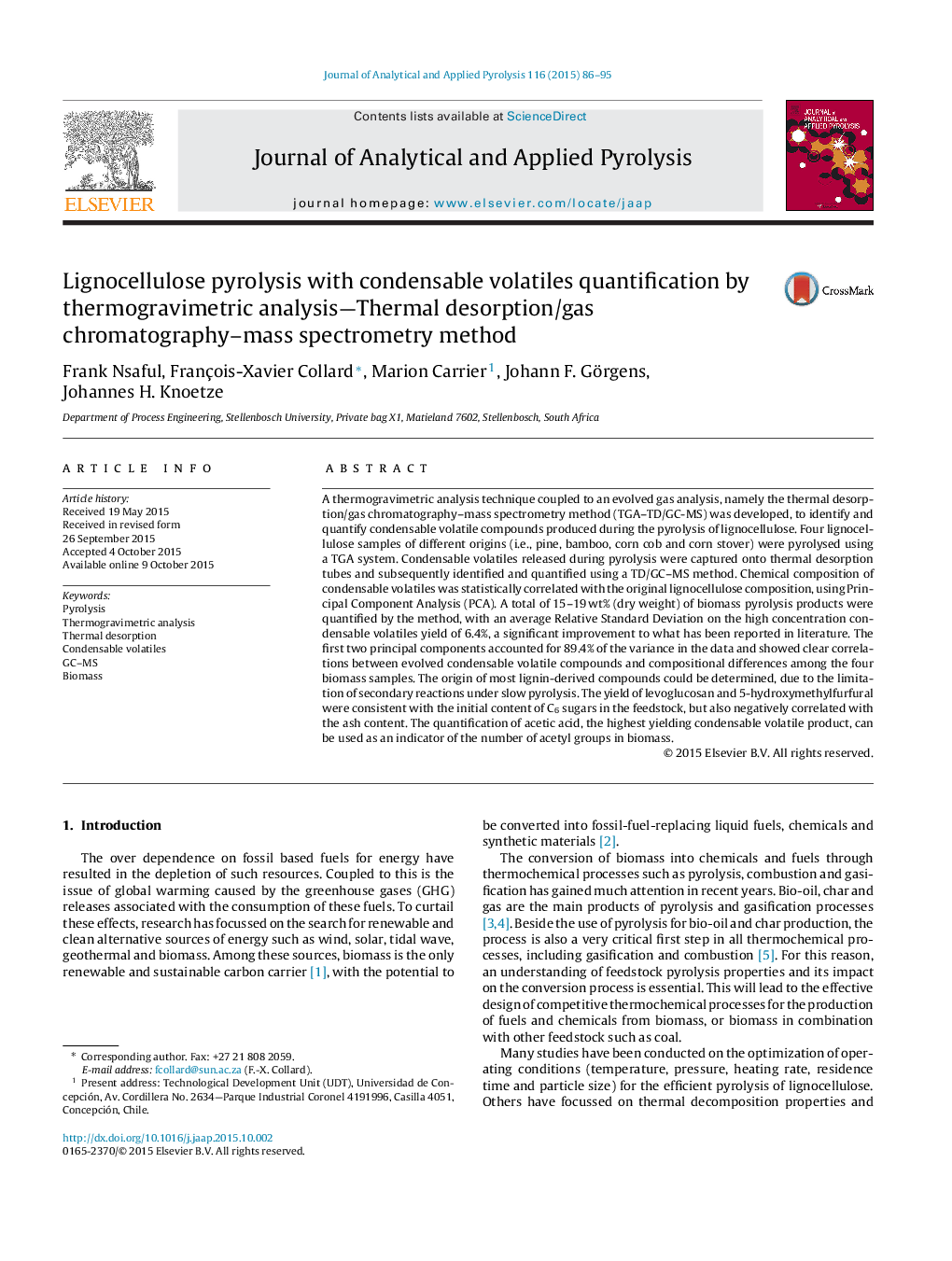| Article ID | Journal | Published Year | Pages | File Type |
|---|---|---|---|---|
| 1197005 | Journal of Analytical and Applied Pyrolysis | 2015 | 10 Pages |
•TGA-TD/GC–MS method developed to quantify condensable volatiles from lignocellulose pyrolysis.•Average RSD of 6.4% obtained for quantification of most concentrated volatiles.•15–19 wt% (dry basis) of lignocellulose degradation quantified as volatile compounds.•Volatiles composition correlated to initial lignocellulose chemical composition.
A thermogravimetric analysis technique coupled to an evolved gas analysis, namely the thermal desorption/gas chromatography–mass spectrometry method (TGA–TD/GC-MS) was developed, to identify and quantify condensable volatile compounds produced during the pyrolysis of lignocellulose. Four lignocellulose samples of different origins (i.e., pine, bamboo, corn cob and corn stover) were pyrolysed using a TGA system. Condensable volatiles released during pyrolysis were captured onto thermal desorption tubes and subsequently identified and quantified using a TD/GC–MS method. Chemical composition of condensable volatiles was statistically correlated with the original lignocellulose composition, using Principal Component Analysis (PCA). A total of 15–19 wt% (dry weight) of biomass pyrolysis products were quantified by the method, with an average Relative Standard Deviation on the high concentration condensable volatiles yield of 6.4%, a significant improvement to what has been reported in literature. The first two principal components accounted for 89.4% of the variance in the data and showed clear correlations between evolved condensable volatile compounds and compositional differences among the four biomass samples. The origin of most lignin-derived compounds could be determined, due to the limitation of secondary reactions under slow pyrolysis. The yield of levoglucosan and 5-hydroxymethylfurfural were consistent with the initial content of C6 sugars in the feedstock, but also negatively correlated with the ash content. The quantification of acetic acid, the highest yielding condensable volatile product, can be used as an indicator of the number of acetyl groups in biomass.
